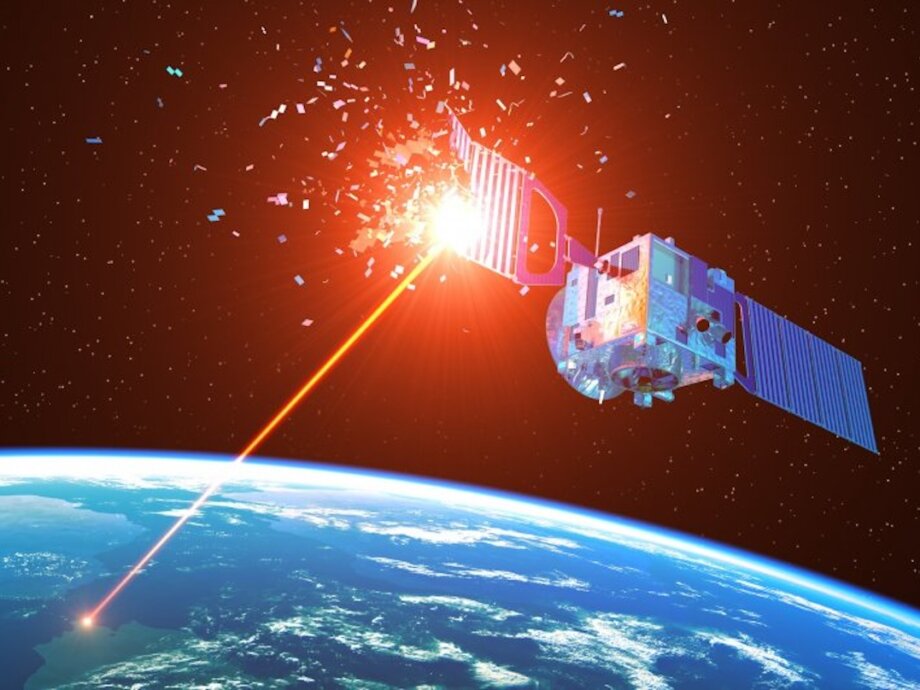China’s Laser Leap: A Crystal Clear Challenge to Space Security
In a development that has sent ripples through the global security community, Chinese scientists have unveiled the world’s largest barium gallium selenide (BGSe) crystal—a technological leap that could redefine the balance of power in space. This synthetic crystal, measuring 60 millimeters in diameter, is at the heart of a new generation of ultra-high-power laser systems. Its primary military application: disabling or blinding satellites, potentially leaving adversaries “blind and deaf” in the event of conflict.
- China’s Laser Leap: A Crystal Clear Challenge to Space Security
- What Makes the BGSe Crystal So Revolutionary?
- Why Lasers? The Strategic Logic Behind China’s Space Ambitions
- From Xinjiang to Orbit: China’s Expanding ASAT Infrastructure
- Technical Triumph: How China Outpaced the West
- International Alarm: The Global Response to China’s Laser Breakthrough
- The Broader Implications: Space as the Next Battlefield
- In Summary
The breakthrough, led by Professor Wu Haixin and his team at the Hefei Institutes of Physical Science under the Chinese Academy of Sciences, is not just a feat of materials science. It is a strategic move in the escalating competition for dominance in space, with direct implications for the United States, India, and other space-faring nations.
What Makes the BGSe Crystal So Revolutionary?
At its core, the BGSe crystal is a synthetic material capable of converting short-wave infrared laser light into mid- and far-infrared beams. This conversion is crucial: mid- and far-infrared wavelengths can travel long distances through the Earth’s atmosphere with minimal loss, making them ideal for ground-based lasers targeting objects in space.
But the real game-changer is the crystal’s resilience. The newly developed BGSe crystal can withstand laser intensities up to 550 megawatts per square centimeter—ten times the threshold of current military-grade crystals. This durability addresses a longstanding problem in laser weaponry: self-inflicted damage. Previous attempts, such as the US Navy’s MIRACL test in 1997, saw powerful lasers melt their own components during anti-satellite trials. The BGSe crystal’s robustness allows for more powerful, stable, and longer-range laser systems.
Manufacturing such a crystal is a marvel of precision engineering. The process involves vacuum-sealing ultra-pure barium, gallium, and selenium in quartz tubes, then using a method called zone refining at over 1,000°C. The crystal grows slowly over a month, followed by careful annealing and polishing to eliminate defects and ensure optical clarity. Even minor contamination by oxygen or moisture can ruin the batch, making the process extremely challenging to replicate outside China.
Why Lasers? The Strategic Logic Behind China’s Space Ambitions
China’s investment in directed-energy weapons, including ground-based lasers, is driven by the changing nature of space warfare. Modern military operations rely heavily on satellites for intelligence, surveillance, reconnaissance (ISR), navigation, and communication. Disabling these satellites could cripple an adversary’s ability to fight, coordinate, or even detect incoming threats.
Chinese military doctrine emphasizes “systems confrontation” and “systems destruction warfare”—strategies that focus on paralyzing key nodes in an adversary’s operational network. In this context, space-based assets are high-value targets. By developing scalable, cost-effective, and deniable means to degrade satellite function, China aims to gain a decisive edge without triggering overt escalation.
According to General Bradley Saltzman, Chief of Space Operations for the US Space Force, China’s ground-based lasers are designed to “blind and deafen US forces by targeting critical space-based ISR assets.” The US Global Positioning System (GPS) and the Space-Based Infrared System (SBIRS), which supports nuclear missile detection, are seen as particularly vulnerable. While attacking SBIRS could risk nuclear escalation, the mere threat of such capabilities alters the strategic calculus.
From Xinjiang to Orbit: China’s Expanding ASAT Infrastructure
China’s anti-satellite (ASAT) program is not just theoretical. Satellite imagery and intelligence reports have identified secretive facilities in Xinjiang province—specifically in Korla and Bohu—housing large ground-based laser systems. These installations are believed to be operational, with the capacity to “dazzle” (temporarily blind) or permanently disable foreign satellites.
Currently, these systems are most effective against satellites in Low Earth Orbit (LEO), where many US and allied ISR satellites operate. However, Chinese research and military writings indicate ambitions to extend engagement ranges to Medium Earth Orbit (MEO) and Geosynchronous Earth Orbit (GEO), where critical assets like GPS and SBIRS reside. This would mark a significant escalation in counterspace capabilities.
Challenges of Targeting Satellite Constellations
One of the main hurdles China faces is the proliferation of resilient satellite constellations. Modern networks, such as Starlink, consist of hundreds or thousands of small satellites. Disabling a single satellite has little impact; neutralizing the entire network would require coordinated attacks on many targets. Chinese analysts acknowledge this challenge and advocate a multifaceted approach, combining:
- Electronic warfare (jamming and spoofing signals)
- Cyberattacks (hacking satellite control systems)
- Directed-energy weapons (lasers and microwave systems)
This integrated strategy is designed to be adaptive, asymmetric, and difficult to attribute—key features in modern “grey zone” conflict.
Technical Triumph: How China Outpaced the West
The BGSe crystal’s development is not just a military milestone; it is a scientific one. First discovered by Chinese researchers in 2010, BGSe quickly attracted global attention for its superior optical properties. Western defense companies have struggled to replicate the crystal, especially at the scale and quality achieved by Professor Wu’s team. The largest BGSe crystal previously reported was far smaller, and attempts to scale up production have been hampered by technical difficulties.
For comparison, the University of Michigan’s ZEUS laser—one of the world’s most powerful—relies on a titanium-doped sapphire crystal nearly 18 centimeters wide, but it took over four years to produce and is not optimized for the same infrared wavelengths as BGSe. China’s ability to rapidly produce large, defect-free BGSe crystals gives it a unique advantage in the race for directed-energy supremacy.
Civilian Applications: Beyond the Battlefield
While the military implications are clear, Chinese scientists are quick to highlight the crystal’s civilian potential. Large BGSe crystals could revolutionize:
- Medical diagnostics (advanced imaging techniques)
- Infrared sensors for missile tracking and aircraft identification
- Ultra-sensitive detectors for scientific research
Since 2020, these crystals have been integrated into various research and development projects, underscoring their dual-use nature. However, it is the military application—particularly in anti-satellite lasers—that has captured the world’s attention.
International Alarm: The Global Response to China’s Laser Breakthrough
The unveiling of the BGSe crystal has sparked concern among military planners and policymakers worldwide. The United States, in particular, views the development as a direct challenge to its longstanding dominance in space. With hundreds of satellites providing global surveillance, navigation, and communication, the US military’s reliance on space assets is both a strength and a vulnerability.
General Saltzman’s testimony before the US-China Economic and Security Review Commission in April 2025 highlighted the growing threat posed by Chinese ground-based lasers. He warned that these systems could “leave the US military blind and deaf” in a conflict scenario. The Pentagon is now reassessing its space deterrence posture, with calls for greater investment in satellite resilience, rapid reconstitution, and offensive countermeasures.
India and other regional powers are also watching closely. The potential for a space arms race is real, with countries seeking to develop their own countermeasures and directed-energy capabilities. The dual-use nature of the BGSe crystal complicates efforts to regulate or monitor its proliferation, raising questions about the future of arms control in space.
European and Asian Perspectives
European analysts have echoed these concerns, noting that China’s technological leap could “revolutionize long-range laser systems and infrared sensing technologies.” The Visegrád Post, for example, described the BGSe crystal as a “satellite-killing weapon” with the potential to alter the global security landscape. Indian media outlets have emphasized the implications for regional security, particularly in the context of China’s growing assertiveness in space and on Earth.
The Broader Implications: Space as the Next Battlefield
The development of the BGSe crystal and its integration into anti-satellite laser systems is part of a broader trend: the militarization of space. As nations become increasingly dependent on satellites for military and civilian purposes, the incentive to develop counterspace weapons grows. Directed-energy weapons, such as lasers, offer several advantages:
- Speed-of-light engagement (no warning or time to react)
- Potentially unlimited “ammunition” (as long as power is available)
- Deniability (difficult to attribute attacks to a specific actor)
- Scalability (can be used for temporary dazzling or permanent destruction)
However, these same features make space warfare uniquely destabilizing. The offense-dominant nature of space—where it is easier to attack than defend—raises the risk of preemptive strikes and escalation. Weak international norms and the lack of binding arms control agreements further complicate the picture.
Deterrence and the Future of Space Security
Experts warn that the US and its allies may be over-relying on satellite resilience and ambiguous signaling to deter attacks. Without credible threats of punishment or rapid reconstitution, adversaries like China may be tempted to strike first in a crisis. The BGSe crystal’s breakthrough underscores the need for a comprehensive strategy that includes:
- Hardened and maneuverable satellites
- Rapid launch and replacement capabilities
- Offensive counterspace options
- International cooperation and arms control initiatives
As one analyst put it,
“The unveiling of China’s BGSe crystal is not just a technical achievement—it is a signal that the space domain is entering a new era of competition, where technological surprise could decide the outcome of future conflicts.”
In Summary
- China has developed the world’s largest BGSe crystal, enabling powerful ground-based lasers capable of targeting satellites.
- The crystal’s resilience solves longstanding technical challenges, allowing for more powerful and stable laser systems.
- China’s anti-satellite program is part of a broader strategy to challenge US dominance in space and gain a military edge.
- Secretive facilities in Xinjiang house operational laser systems, with ambitions to threaten satellites in higher orbits.
- The BGSe breakthrough has dual-use potential, with applications in medical imaging and infrared sensing.
- International alarm is growing, with the US, India, and Europe reassessing their space security strategies.
- The development marks a new phase in the militarization of space, raising urgent questions about deterrence, arms control, and the future of global security.












